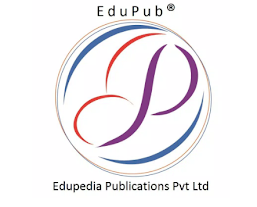Rapid urbanization represents major threats and challenges to personal and public health. The World Health Organisation identifies the ‘urban health threat’ as three-fold: infectious diseases, non-communicable diseases; and violence and injury from, amongst other things, road traffic. Within this tripartite structure of health issues in the built environment, there are multiple individual issues affecting both the developed and the developing worlds and the global north and south.
Reflecting on a broad set of interrelated concerns about health and the design of the places we inhabit, this book seeks to better understand the interconnectedness and potential solutions to the problems associated with health and the built environment. Divided into three key themes: home, city, and society, each section presents a number of research chapters that explore global processes, transformative praxis and emergent trends in architecture, urban design and healthy city research. Drawing together practicing architects, academics, scholars, public health professional and activists from around the world to provide perspectives on design for health, this book includes emerging research on: healthy homes, walkable cities, design for ageing, dementia and the built environment, health equality and urban poverty, community health services, neighbourhood support and wellbeing, urban sanitation and communicable disease, the role of transport infrastructures and government policy, and the cost implications of ‘unhealthy’ cities etc. To that end, this book examines alternative and radical ways of practicing architecture and the re-imagining of the profession of architecture through a lens of human health.
EDITED BOOK Background
Slums is typically understood to involve all aspects of residential areas. Slums is studied by wide range of schoalrs. They include sociologists, human geographers, public health professionals, architects, planners, and urban designers, to mention just a few.
Sociologists study the life of communities in our cities, towns and neighbourhoods. Human geographers research issues ranging from into the migrations of people from rural to urban to the socio-political settings and the patterns of life and activity that characterise cities across the world. Public health professionals today continue the work of over two centuries in their field concerned with the city as an important site for public health debates. Examples in recent years include the Healthy Cities initiative developed by the World Health Organisation and multiple governmental and NHS projects to promote notions such as the ‘walkable city’, not to mention the health, community and social agenda promoted by the UN Habitat programme.
All of this research and activity of course happens alongside, and in collaboration with, those academics and professionals engaged in the built environment in more traditional ways. Architects form example have long engaged in designing buildings while working with social groups and communities on ‘community design’ projects and collaborating with the public to create more ‘human’ city environments. Urban planners obviously work with policy makers and architects directly, but are also now fully embedded in community participation exercises involving human geographers and sociologists. At an even larger regional planning level these issues are linked to government policy of community regeneration and a broader narrative on public health and healthy living that encourages active lifestyles and thus, walkable and bicycle friendly city streets.
Edited Book Chapters Rationale
Slum is an inherently interdisciplinary phenomenon. However, currently, this reality is only partially reflected in literature that periodically explores specific aspects of this interdisciplinary field, but has not yet developed a coherent platform on which to explore the full range and depth of the cross disciplinary nature of life in our cities, their physical infrastructure, their planning policies, health implications and community bonds. As a result, there is a need to develop a platform that supports research into the built environment of cities across disciplines such as sociology, human geography, community and political studies in a coherent and interconnected way.
In serving this role, the series will make a major contribution to the most embedded field of built environment studies (architecture, urban design, planning) and make significant contributions to those fields that inevitably engage with it in the course of their own specific studies (such as sociology, human geography, public health and community studies etc).
The series promises to become a fundamental reference point to scholars across disciplines in the India and further afield, giving multiple disciplines a platform to interconnect and learn from each other. It is expected to establish a clear interdisciplinary definition and reference point for the multiple perspectives and approaches to research in, and related to, the built environment.
How to Submit a Proposal
Please submit book chapters to editor@pen2print.org
ISBN 978-81-951119-4-7























